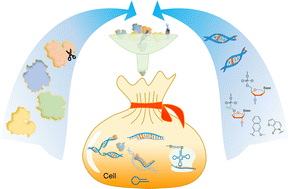From polymerase engineering to semi-synthetic life: artificial expansion of the central dogma
Abstract
Nucleic acids have been extensively modified in different moieties to expand the scope of genetic materials in the past few decades. While the development of unnatural base pairs (UBPs) has expanded the genetic information capacity of nucleic acids, the production of synthetic alternatives of DNA and RNA has increased the types of genetic information carriers and introduced novel properties and functionalities into nucleic acids. Moreover, the efforts of tailoring DNA polymerases (DNAPs) and RNA polymerases (RNAPs) to be efficient unnatural nucleic acid polymerases have enabled broad application of these unnatural nucleic acids, ranging from production of stable aptamers to evolution of novel catalysts. The introduction of unnatural nucleic acids into living organisms has also started expanding the central dogma in vivo. In this article, we first summarize the development of unnatural nucleic acids with modifications or alterations in different moieties. The strategies for engineering DNAPs and RNAPs are then extensively reviewed, followed by summarization of predominant polymerase mutants with good activities for synthesizing, reverse transcribing, or even amplifying unnatural nucleic acids. Some recent application examples of unnatural nucleic acids with their polymerases are then introduced. At the end, the approaches of introducing UBPs and synthetic genetic polymers into living organisms for the creation of semi-synthetic organisms are reviewed and discussed.

- This article is part of the themed collection: Themed collection on XNA Xeno-nucleic acids


 Please wait while we load your content...
Please wait while we load your content...